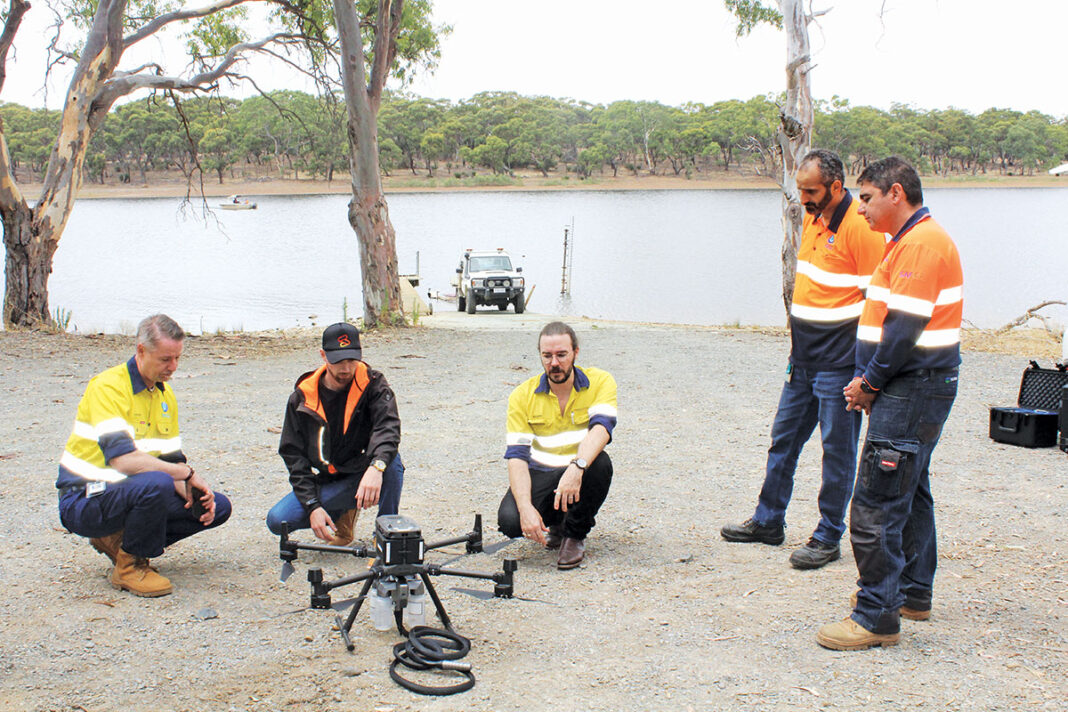From the skies over Finger Point to reservoirs around the state, 19 licensed drone pilots are transforming how SA Water inspects its infrastructure and elevating safety to new horizons since the purchase of its first drone in 2015.
Throughout 2022-23 alone, SA Water drone pilots have performed 785 flights and accumulated a total flight time of 176 hours, supporting various operations.
SA Water Coordinator Survey Services Daniel Haines said drones were being used in all corners of South Australia, from Finger Point in the South East to Yalata in the West Coast and throughout the Anangu Pitjantjatjara Yankunytjatjara lands in the state’s Far North.
“Traditionally, the water service industry has relied on manual inspections and labor-intensive methods to assess the condition of water infrastructure including reservoirs and pipes, which raises particular challenges in hazardous and hard-to-reach locations,” he said.
“Armed with the capability to capture high-resolution imagery and data from previously inaccessible areas, drones have transformed our approach to asset inspections, significantly improving safety for our crews while optimising operational efficiency.
“We are using drones to complete inspections of pipes and tunnels, including the tunnel from Clarendon to Mount Bold Reservoir, as part of our asset management and maintenance program which reduces the need for staff to enter confined spaces, limiting the risk of personal injury.
“Using our Elios drone – which is capable of navigating indoor areas and confined spaces – we were recently able to inspect an old building located at Bolivar wastewater Treatment Plant which was otherwise unsafe to enter and believed to contain asbestos.
“Drones equipped with thermal sensors can also inspect vast areas, identify hotspots and potential issues affecting our solar panel performance at all of our sites across the state including at Hope Valley Reservoir, Adelaide Desalination Plant and along the Morgan to Whyalla Pipeline, more accurately and rapidly than humans can.”
Mr Haines said the aerial tools were revolutionising how SA Water carries out a broad range of projects and tasks, which also includes vegetation mapping and monitoring and observing environmental changes over a period of time with video comparisons.
“The number of flights and amount of time we fly drones each year is growing, as we explore other options for their use.
This includes monitoring seagrass in Gulf St Vincent, off the South East coast of the state, and continuing to research safer methods of collecting water samples from our reservoirs, the River Murray and other open water sources,” he said
“Drones have become an important part of how we operate and maintain our water assets, systems and networks, as part of our commitment to provide safe and reliable water services to the South Australian community.”




